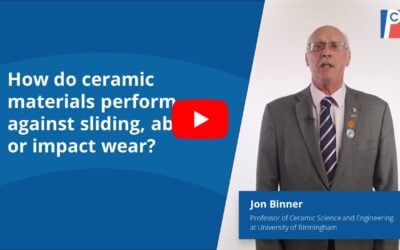Precision Ceramics is a Macor distributor and expert. In fact, there is no other Macor Supplier who knows more about this unique machinable glass ceramic than Precision Ceramics. We’re also experts in Macor Metallization and publishers of the Macor Technical Bulletin.
Macor machinable glass ceramic – to – titanium seals have been achieved with joint shear strength of 8000 psi and are leak tight to 10-10 (cc (STP) -mm .(S-cm2-cm Hg). This brazing procedure is outlined below. Another interesting related topic to this in our Macor series is our post on Macor’s Technical Properties and Macor’s Composition.
The process was first developed in response to fusion energy project needs. A sealed ceramic-to-metal part is necessary for construction of the neutral ion beam injection source. Macor was selected as the optimal ceramic due to its low outgassing, excellent dielectric properties and ease of machining. Titanium was the selected metal due to its close thermal expansion match to Macor.
Size and configuration of the parts play a major role in the success of the brazing operation. Applicability to a specific size or configuration can be confirmed by contacting Corning Incorporated or an authorised Macor distributor.
Procedure
- Macor – code 9658
- Brazing alloys – Cu-Sil, Ni-Cu-Sil no.3, Ni-Cu-sil no.8, Gapasil no.9 (available from GTE-WESGO, Belmont, CA
- Ethylene glycol
- Titanium hydride powder (325 mesh)
- Acetone-trichlorethylene degreasing solution
- 2% HF or 5% HNO3/2% HF etching solution
- Titanium or titanium alloy
Surface preparations
Macor
- Grind surface to better than 30 microinch AA and lap to 5 microinch AA for maximised braze strength.
- Degrease in acetone – trichlorethylene solution in an ultrasonic bath.
- Wash ultrasonically for 5 minutes in boiling distilled water.
- Dry for 2 hours at 100ºC.
- Handle with care to insure the cleanliness of the part.
- Use as soon as possible.
Titanium
- Degrease in acetone-trichlorethylene solution in an ultrasonic bath.
- Etch at room temperature for approximately 30 seconds in etching solution.
- Rinse thoroughly in distilled water.
- Dry thoroughly at 100ºC.
- Handle with care to insure the cleanliness of the part.
- Use as soon as possible.
C – Fixturing
- Prepare a slurry of 2cc ethylene glycol with 1g titanium hydride powder – keep constantly agitated.
- Apply a thin layer of the slurry on the surface of the Macor, making sure to completely cover the area to be brazed.
- Allow the titanium hydride layer to air dry.
- Place 0.001” to 0.003” brazing alloy over the hydride layer. Place titanium metal part over the alloy.
- Fixture to maintain alignment during firing.
- Apply force of 5 psi on the parts to facilitate brazing alloy flow out.
D – Firing
- Apply a vacuum of 10-5 Torr (or better) on the system and maintain throughout the firing cycle.At 350ºC the titanium hydride decomposes and a pressure increase may be detected. Be sure to maintain at least a 10-5 Torr vacuum at this temperature.
- Heat at a rate of 50 – 200ºC/hr. Maintain equalised heating of both the Macor and metal parts.
- Hold for 1 minute at 20 – 30ºC over the liquids temperature of the brazing alloy.
Liquidus
- Cu-Sil 790ºC
- Ni-Cu-Sil no.3 & no.8 790ºC Gapasil no.9 880ºC/li>
Tips for Optimal Brazing
- The furnace should be oxygen-free. Oxygen will react with the titanium hydride after it decomposes. Titanium metal ‘getters’ can be placed around the part being brazed.
- When fixturing parts, use a ‘soft’ material (e.g. boron nitride). This facilitates removal of the finished part if the alloy flows onto the supports. Also, a ‘brazing stop’ material may be applied to the parts where the alloy is not wanted (available from GTE-WESGO, Belmont, Ca).
- The titanium hydride slurry should be made fresh before each brazing operation. The shelf life of this system is relatively short.
- The brazing alloys can be purchased in preformed shapes. Use of these preforms offers a more uniform seal and is advised when possible.
Related topics

Macor Technical Properties
In this post we evaluate the technical properties of Macor using a range of different tests with the results displayed on graphs. Macor is an outstanding engineering material and is machinable with ordinary metalworking tools. .

Macor Composition
In this post we evaluate the the composition of Macor, the compounds included and it’s microstructure. Macor is an outstanding engineering material and is machinable with ordinary metalworking tools.





